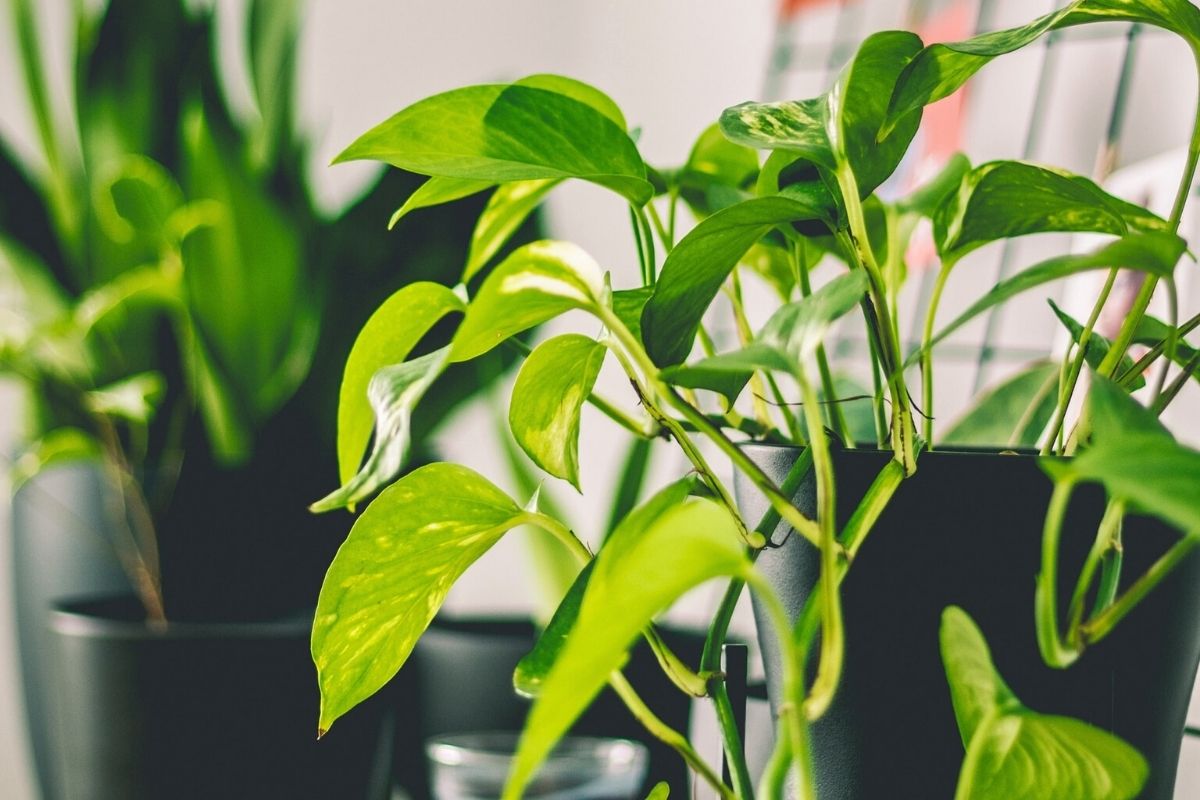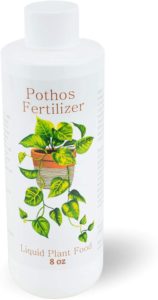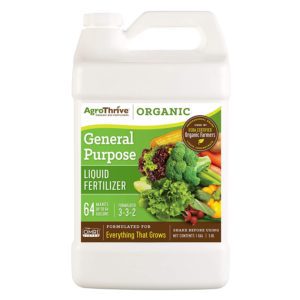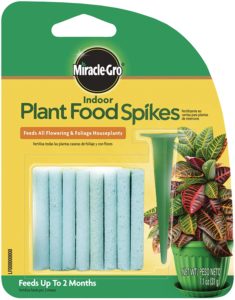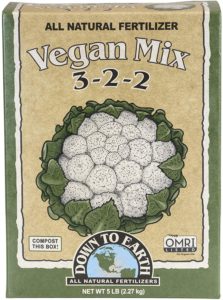When caring for your pothos (Epipremnum aureum), it’s pretty hard to go wrong. These jungle vines are hardy, luscious, and come in an amazing variety of species, from the variegated marble queen pothos to our standy favorite golden pothos, to suit just about any taste.
So why give your pothos fertilizer when it seems to grow faster than a Southern lawn in summer pretty much all year round? 🤔
The answer is this: The right fertilizer will improve your plants’ root health, help it produce healthier, more vibrant foliage, improve its ability to bounce back after pruning, and boost its aerial root growth to enable indoor climbing.
In short? Your pothos will be as happy as if it’s back in the jungle. In this guide, learn how to choose a good fertilizer for your pothos and set up a fertilizing schedule to help it thrive.
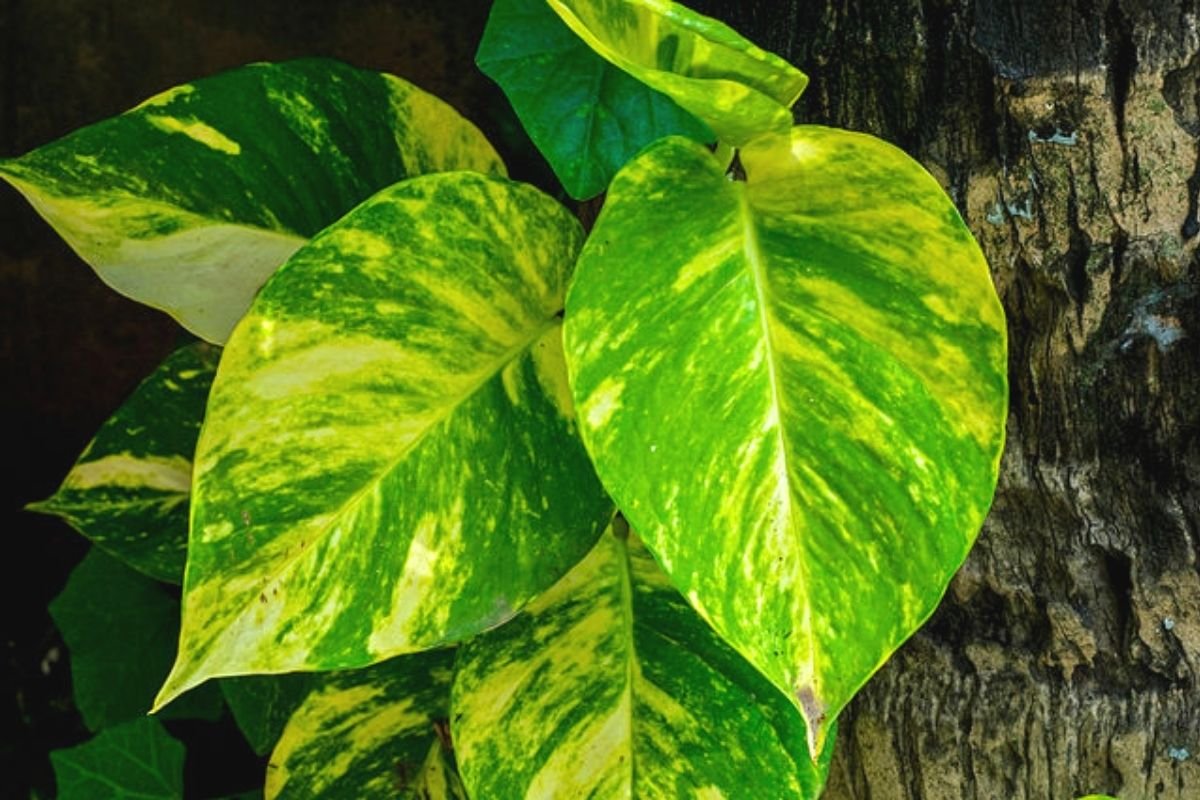
What to look for in a pothos fertilizer
No matter what you’re growing, all plants require food to live that potted life. Different plants need higher or lower concentrations of different elements to be happy.
The three basic macro nutrients responsible for basic plant health and growth are NPK. The N stands for Nitrogen, the P is for Phosphorus, and K is the elemental letter for Potassium.
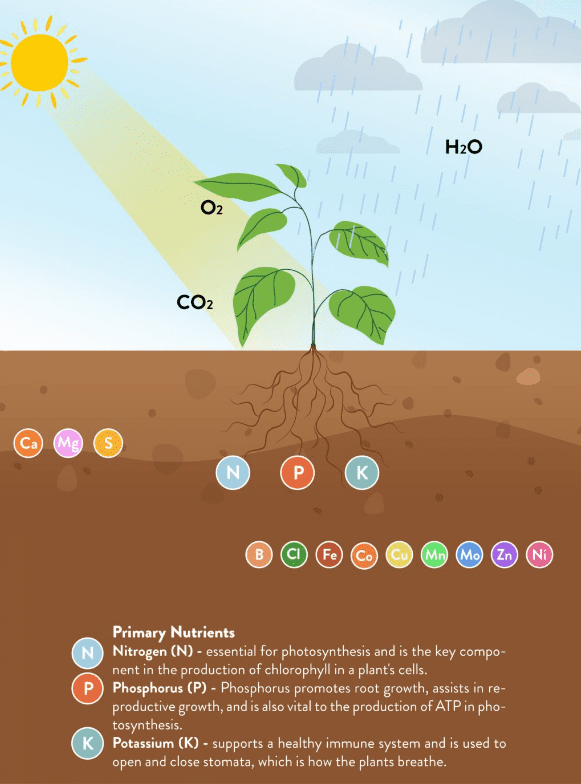
Houseplant fertilizer will always contain these three macronutrients in varying amounts, which are known as NPK ratios.
- Nitrogen: is one of the main components in the production of protein. Protein makes up a large majority of all plants tissue.
- Phosphorus: helps plants use and store energy and is a crucial component of photosynthesis. This nutrients special addition also helps plants develop normally.
- Potassium: strengthens the root systems of plants and helps them to fend off pests.
Most fertilizers will clearly advertise the levels of NPK that are in the formula. You will see this written as 1-1-1 or 10-10-10. The number 1 here represents a low level of each major nutrient, while a 10 means the mix is much stronger.
But don’t be fooled – higher NPK values aren’t always better!
Your pothos plant needs a fertilizer with lower levels of NPK, something in the 1 to 3 range of each element. This is because pothos plants aren’t heavy feeders. They’re used to growing in shallow jungle soils with limited nutrients available, and will be happiest with a bit less than a bit more of the macronutrients.
You’ll want to make sure that the pothos fertilizer you select also has a variety of micronutrients. Micro nutrients are trace minerals that plants need in smaller amounts than macronutrients, and they vary depending on the plant.
Pothos typically need the following micronutrients:
- Copper
- Magnesium
- Zinc
- Iron
There are many different types of fertilizers out there. Depending on your indoor plant collection, it may be a good idea to buy a general fertilizer that you can use not only on your pothos, but on all of your indoor plants. Just make sure the NPK values are around 3 or below.
Types of pothos fertilizers
Time for a little visualization exercise, plant friends. Gather round 🔮 Imagine a big, luscious healthy pothos plant with shiny, variegated leaves and long vines dangling from your book shelf and glistening in the sunlight.
If you can imagine it, you can grow it – especially with the help of a balanced fertilizer!
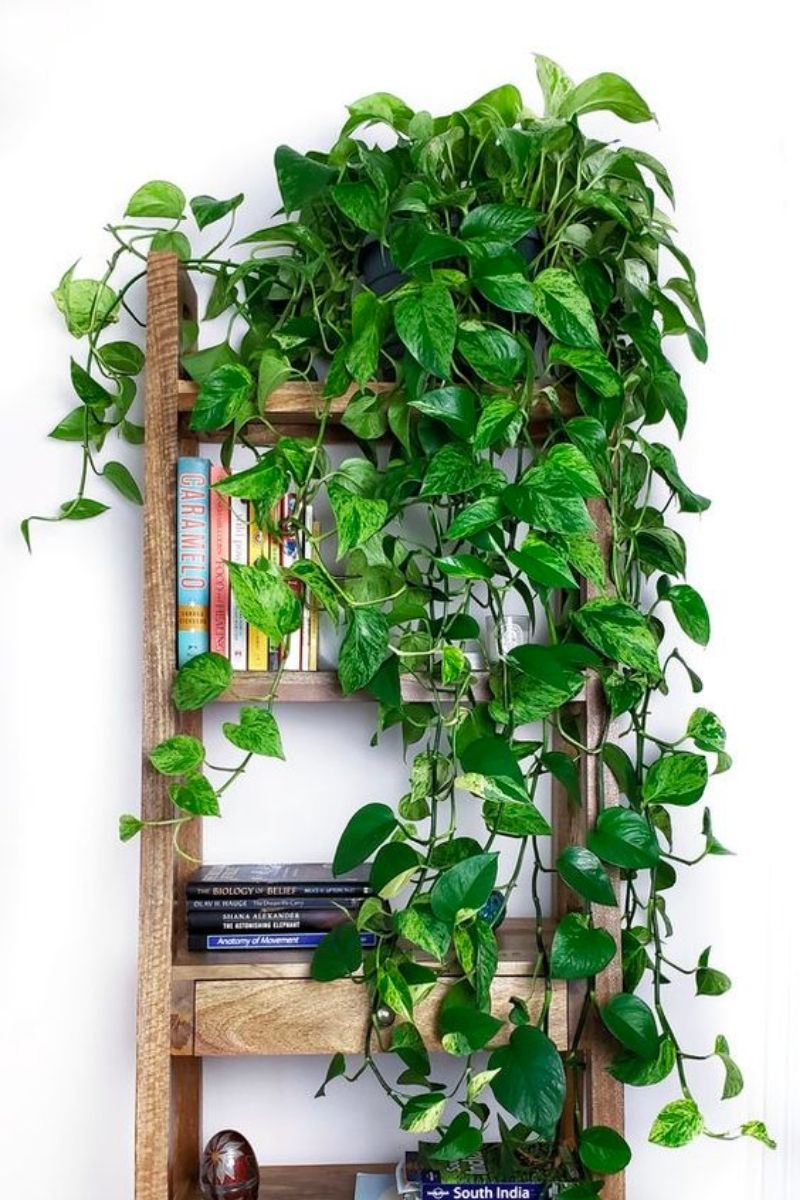
Houseplant fertilizers come in all different shapes and sizes. Many are specifically formulated for individual plant types – but before you buy one of these, it’s good to know why they work so you can use a complimentary potting soil and supplement with your own DIY fertilizer additions, like worm compost.
Liquid fertilizers are probably the most popular for houseplants since they absorb quickly and are concentrated for easy storage.
Slow-release fertilizers are specifically formulated to slowly release nutrients over a specific amount of time. They usually come in the form of small pellets or little stakes.
Granular fertilizers come in the form of small beads or grains that are added directly to the topsoil or can be mixed into the potting soil if you’re repotting your pothos plant.
So what’s the best fertilizer for pothos plants? It comes down to personal choice. Below you’ll find our top recommendations for these different types of fertilizer.
Liquid fertilizers
Pothos plants love liquid fertilizers. If you are new to the wide world of indoor houseplants this could be your best option. Liquid fertilizers are very easy to measure and apply.
Different liquid fertilizers have different levels of NPK as well as micro nutrients. Keep your eyes peeled for a brand that has a low NPK ratio as well as copper, iron, magnesium and zinc micronutrients.
If you have a higher concentration NPK fertilizer on hand, you can simply decrease the concentration of of liquid fertilizer per the suggested amount to mix up a plant food.
For example; if you have a balanced 10-10-10 liquid fertilizer, you could decrease the amount by 1/3 to achieve close to a 3-3-3 level of plant food.
Our favorite Pothos liquid fertilizer
We here at the indoor nursery really like this specific pothos plant fertilizer. It’s made with 100% natural ingredients and delivers an optimum NPK formula your pothos will love. One 8 oz bottle should last about 8 months to 1 year.
Agro Thrive All-Purpose Organic Liquid Fertilizer
We recommend this organic, all-purpose liquid fertilizer with a 3-3-2 NPK ratio. It’s designed to activate your soil’s micro-flora and contains about 70% fast release nu
trients, and 30% slow release nutrients to keep your pothos nourished for several months after application.
See also: plant food vs. fertilizer: how are they different from one another?
Slow-release fertilizers
Slow release formulas are popular because they ensure the plant’s food is spread out over a longer time period. When using a slow-release fertilizer for your pothos, you can be sure it will provide your plant with nutritious soil long after you apply it.
Slow-release pellets containing the various macro and micronutrients slowly dissolve over time when they come in contact with water.
Maintaining a regular watering schedule will help the slow release function to work properly and keep your houseplants healthy. Slow-release formulas are easy to use and help you maintain a routine fertilizer schedule with applications less often.
Unfortunately, many slow-release formulas are not designed with the pothos plant in mind. You may need to reduce the amount of fertilizer you apply to avoid “nutrient burn” which will damage your plant’s roots and foliage.
Nitrogen can be especially problematic for pothos when applied in high dosages. You can spot nutrient burn if the leaves of your pothos turn yellow or brown and curl slightly.
If you think you’ve added too much fertilizer to your soil, simply drench your plant with water for a couple of minutes until the water runs freely from the holes in your pot. This should help excess nutrients in the soil to drain out.
Remember, less is more when fertilizing your pothos. Sometimes it’s easy to assume the growth of your plant will decrease with fewer nutrients. But for some plants including the pothos lower levels of nutrient additions will actually encourage healthy growth.
If the levels of NPK advertised in the slow release fertilizer you purchase is high, simply decrease the amount you use by a fraction. Make sure to monitor your plant for any adverse effects that may be caused by fertilizer application.
Miracle-Gro Indoor Plant Food Spikes
Miracle grow makes a plant food spike that is easy to use and provides food for up to 2 months. I would recommend using half a spike per application to reduce the amount of nutrients by half.
Granular fertilizers
Granular fertilizers are a good choice if you like to add an extra punch to your potting soil when you’re repotting. Alternatively, it can be applied directly to the topsoil of your pothos pot. A small measuring vessel is usually included in the package to help you make exact measurements.
Similar to the slow release formulas, the beads in granular fertilizers interact with water and will add nutrients to the soil when in contact with moisture. The nutrients will help keep roots strong and encourage bright green leaves to grow.
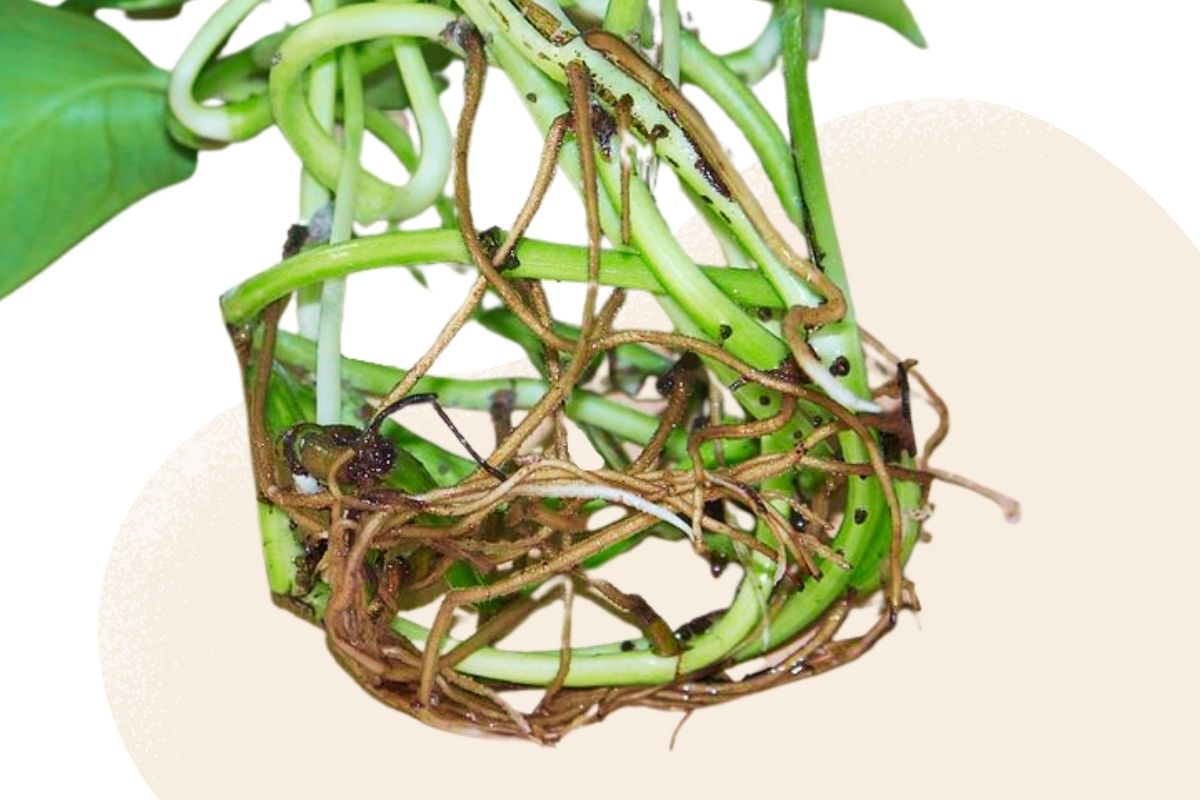
Most granular fertilizers have high NPK levels so you’ll have to reduce the quantity you apply. Make sure to read the label carefully and apply in smaller quantities to achieve optimum fertilizer levels for your epipremnum aureum or pothos plant.
Down To Earth Vegan Fertilizer Mix 3-2-2
Down to Earth Fertilizer makes a great dry granular mix in the ideal ratio range for pothos. When using on houseplants, mix this granular product with a thin layer of compost to improve the bioactivity in the soil. Plus? It’s vegan friendly!
How often to fertilize pothos plants
Your pothos plants are intricately connected to the weather and seasons outside your window. It’s important to consider each growing season and how your fertilization schedule will be affected.
Pothos plants require a feeding schedule that changes with the months of the year. Generally speaking, growth for all plants slows during the fall and winter and speeds up during the spring and summer.
A solid fertilizing schedule for your pothos plant can be organized around the seasons below.
Spring/Summer
The main growing season for your pothos are the spring and summer months. During these months fertilize your pothos once or twice per month.
Remember, if you are using a fertilizer with a higher concentration of NPK and micronutrients dilute or use less of the fertilizer. You may even need to fertilize less often.
Fall
Your pothos plant won’t need much fertilizer at all during the fall months. I recommend fertilizing once every 2 months.
If you’ve opted for a slow release fertilizer. Simply add your fertilizer to the soil once when the weather turns from summer to fall.
Winter
The lower temperatures and reduced sunlight hours will bring your fertilizing to halt during the winter. Pothos plants go into a hibernation-like state through the coldest months of the year.
Plan to water your pothos plants less and completely stop fertilizing. You’ll still need to hydrate your plant every week or so to avoid an underwatered pothos, but remember that overwatering is more common in the dark and cold months than underwatering.
What types of fertilizers to avoid
- Coffee grounds – Coffee grounds can make a great soil amendment for many plants, but not pothos. Coffee grounds can change the pH of your soil rapidly. Pothos prefers a pH of 6.1-6.8 and you may dip out of this range with the addition of coffee grounds.
- Urea – This fertilizer is very high in Nitrogen and can cause stress and even leaf burn in houseplants. Urea is generally used on outdoor crops and should be avoided when it comes to your pothos.
- Compost tea – Compost tea is widely used in outdoor gardening as a fertilizer. A tea is made by soaking finished compost in water, and then using the “tea” that’s derived as a liquid fertilizer is applied to plants. While compost tea is great for outdoor applications, it can be tricky to use successfully indoors. Unless you’re a skilled gardener, have access to high quality finished compost and have experience brewing the tea yourself, you’re better off buying a liquid fertilizer that is ready to apply straight out of the bottle. Your pothos plants will thank you!
More about fertilizing
- 10 Best Worm Composter Bins For Easy Homemade Compost
- Compost Starter 101: When You Need It And How To Make It
- Our top pothos fertilizer picks for luscious vines
- 5 reasons to use coffee as fertilizer for your plants
- Best fertilizer for Monstera plants for gorgeous leaves
- Fertilizer Burn on Plants? Here’s How to Fix it
- Fiddle leaf fig fertilizer: How to feed your fiddle leaf

